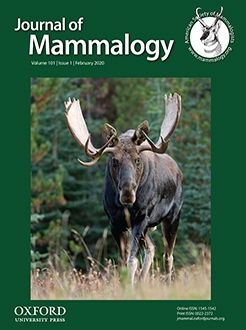Musth is an annual, asynchronous, rut-like phenomenon observed in male elephants. We examined whether musth is a roving strategy, and whether musth provides a temporary advantage to young males through increased access to female groups. We collected long-term data on the musth status, associations, and locations of male elephants in the Kabini population in southern India. We sighted older males more frequently in musth than younger males. We found a greater turnover of musth than non-musth males in the study area, suggesting that musth is a roving strategy, enabling males to travel widely and away from their non-musth range. Contrary to our expectation, young (15–30 years old) males spent a smaller proportion of their musth time than their non-musth time associating with females, and associated with similarly sized female groups irrespective of musth status. Old (> 30 years old) males spent only a slightly higher proportion of their musth time than non-musth time with female groups, but associated with larger female groups during musth. Although old males in musth associated with young non-musth males more often in the presence, than in the absence, of females, young males in musth were never sighted with old non-musth males in the presence of females. Therefore, the payoff from musth, as a strategy to gain access to females, was age-specific; musth in old males allowed for increased association with females, while musth in young males restricted their access to females. There was no spatial avoidance between musth and non-musth adult males at scales larger than immediate associations. Our results suggest that musth seems to be primarily a roving strategy for old males to find and associate with females and not a strategy for young males to gain a temporary advantage over old males, within the broad age-classes that we examined.
How to translate text using browser tools
5 December 2019
Musth and its effects on male–male and male–female associations in Asian elephants
P. Keerthipriya,
S. Nandini,
Hansraj Gautam,
T. Revathe,
T. N. C. Vidya
ACCESS THE FULL ARTICLE

Journal of Mammalogy
Vol. 101 • No. 1
February 2020
Vol. 101 • No. 1
February 2020
age
Asian elephant
Kabini Elephant Project
male associations
male spacing
musth





